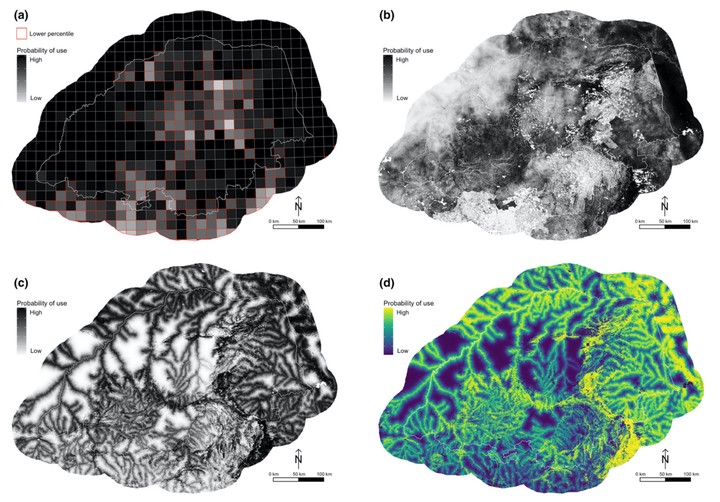Cats, connectivity and conservation - incorporating data sets and integrating scales for wildlife management

Abstract
Understanding resource selection and quantifying habitat connectivity are fundamental to conservation planning for both land-use and species management plans. However, data sets available to management authorities for resource selection and connectivity analyses are often highly limited and fragmentary. As a result, measuring connectivity is challenging, and often poorly integrated within conservation planning and wildlife management. To exacerbate the challenge, scale-dependent resource use makes inference across scales problematic, resource use is often modelled in areas where the species is not present, and connectivity is typically measured using a source-to-sink approach, erroneously assuming animals possess predefined destinations. Here, we used a large carnivore, the leopard Panthera pardus, to characterise resource use and landscape connectivity across a vast, biodiverse region of southern Africa. Using a range of data sets to counter data deficiencies inherent in carnivore management, we overcame methodological limitations by employing occupancy modelling and resource selection functions across three orders of selection, and estimated landscape-scale habitat connectivity – independent of a priori source and sink locations – using circuit theory. We evaluated whether occupancy modelling on its own was capable of accurately informing habitat connectivity, and identified conservation priorities necessary for applied management. We detected markedly different scale-dependent relationships across all selection orders. Our multi-data, multi-scale approach accurately predicted resource use across multiple scales and demonstrates how management authorities can more suitably utilise fragmentary data sets. We further developed an unbiased landscape-scale depiction of habitat connectivity, and identified key linkages in need of targeted management. We did not find support for the use of occupancy modelling as a proxy for landscape-scale habitat connectivity and further caution its use within a management context. Synthesis and applications. Maintaining habitat connectivity remains a fundamental component of wildlife management and conservation, yet data to inform these biological and ecological processes are often scarce. We present a robust approach that incorporates multi-scale fragmentary data sets (e.g. mortality data, permit data, sightings data), routinely collected by management authorities, to inform wildlife management and land-use planning. We recommend that management authorities employ a multi-data, multi-scale connectivity approach – as we present here – to identify management units at risk of low connectivity.